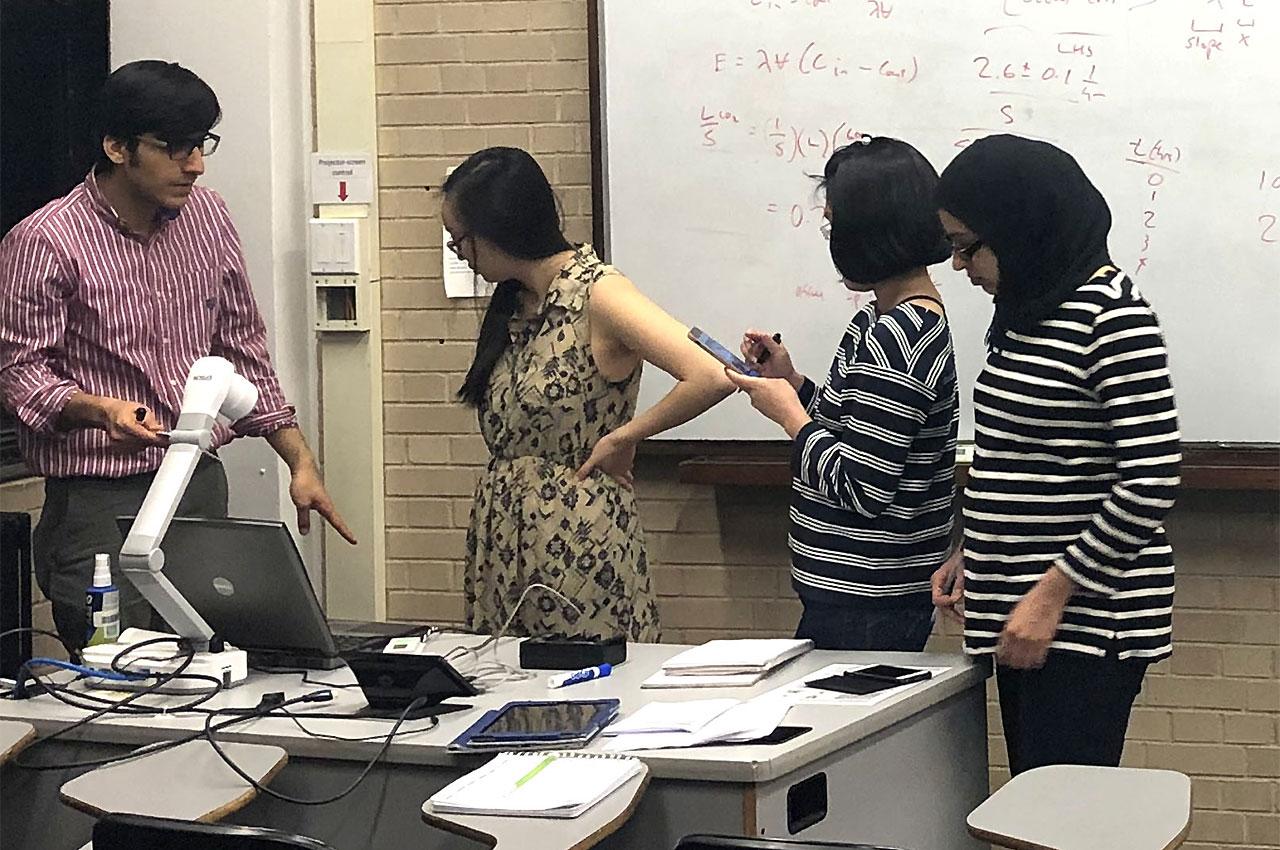HVAC Innovation Earns Heidarinejad a 2019 ASHRAE New Investigator Award
Assistant Professor Enhancing Energy Efficiency in Buildings to Provide Healthy Indoor and Outdoor Environments

While the average life expectancy of a building in the United States is approximately 70 years, less than 1 percent of commercial building stock is retired each year. Mohammad Heidarinejad, assistant professor of architectural engineering at Illinois Institute of Technology, is creating a practical path toward maximizing the operational energy performance of buildings while minimizing operational costs.
Heidarinejad received the American Society of Heating, Refrigerating, and Air-Conditioning Engineers New Investigator Award during the society’s annual conference on Monday, June 24, for his research proposal titled “Improving Control Sequences in Existing Buildings Using Virtual and Physical Testbeds.”
Each year ASHRAE selects one award recipient based on the candidate’s competence in engineering, potential for growth as a professional researcher, and potential for significant development as an academic leader in training future engineers. This prestigious recognition includes a base grant of $100,000 over two years to support Heidarinejad’s research and career development with the potential for more funding in the third year.
Heidarinejad’s research focuses on multi-scale modeling of energy and airflows in the built environment, and creating energy efficiency within sustainable urban neighborhoods. He plans to utilize this award to engage students in a real-world testbed that is set up for the implementation of control logics. “My goals include engaging students in plug-and-play testbeds using different heating, ventilation, and air conditioning components to work with several building communication protocols, and evaluating the feasibility and practicality of the control sequences based on field measurements in campus buildings,” says Heidarinejad.
In particular, he describes this study as a unique opportunity for students in the course Control of Building Environmental Systems to conduct research and learn about the fundamentals of building operation and control. Heidarinejad explains, “I envision training students to collect data on occupancy, ventilation rates, environmental conditions, and the HVAC operation to develop building control sequences based on real-world data collection.”
After testing control logic in a small physical testbed and comparing actual performance to virtual testbed results, solutions will be implemented in a cluster of real buildings with support from industry professionals.
“If you’re trying to improve indoor quality while looking at the broader scope of energy efficiency savings, the results of this study could be very crucial in terms of prioritizing which items we need to tackle in building mechanical systems for the purposes of improving control strategies,” says Heidarinejad.
He adds, “I’m optimistic that with the completion of this project we will have a better understanding of how we can improve the control strategies for a lot of these older buildings, including our own buildings here on campus.”
Brent Stephens, Department of Civil, Architectural, and Environmental Engineering chair, associate professor of architectural engineering, and director of the architectural and environmental engineering programs at Illinois Tech, nominated Heidarinejad for the award, which Stephens won in 2015.
Stephens shares, “Mohammad’s research will improve HVAC system control logic for commercial buildings, particularly existing buildings, to enhance their energy and environmental performance. It will also support his efforts in teaching, including improving our hands-on experiences for undergraduate and graduate students, focusing on design projects and real-world data collection, and increasing participation between engineering and architecture.”


![[From left to right] Associate Professor of Biomedical Engineering Kenneth Tichauer and Professor of Electrical and Computer Engineering Jovan Brankov](/sites/default/files/styles/width_350/public/2024-11/tichauer-brankov_1280x850.jpg?itok=hxdjBhlU)

